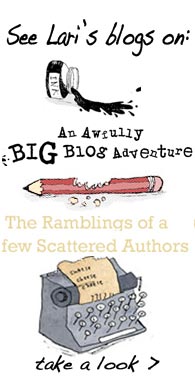I’ve now defeated baddies in four different novels. But that adds up to a lot more than four baddies.
I’m counting right now, and if you include minions, packs of slightly untrustworthy wolves, and creatures up to no good making the lives of my goodies more difficult, I think I’ve come up with ways of destroying, defeating, evading or embarrassing at least 13 different baddies or groups of baddies.
But when I started writing each book I didn’t know how I was how going to defeat any of them. I almost think that would be cheating, to have a baddie that I already knew how I was going to deal with.
Because the goodies don’t know. They don’t have any idea what they are going to do, and I like it like that. They are scared and nervous and confused and often don’t know what the baddie’s agenda is, or even all their powers. Usually, as the writer, I do at least have that information before them.
I can build the baddie to be as nasty or strong or clever or tricky as I like. But I certainly DON’T deliberately build in any weaknesses. I don’t have some kind of washing machine style built-in obsolescence.
Because I want a real baddie not a cardboard pushover.
When I’m writing, there comes a point about two thirds or three quarters of the way through the book when I start to see how the final battle or confrontation is going to happen. I call it the endgame, and when it slowly starts to form in my mind, that’s usually when I begin to see how to defeat the baddie.
In the book I’m writing now, the fourth First Aid for Fairies book, I knew who had to defeat the baddie (you’ll see who and I’m sure you’ll understand why when you read the book), I was starting to see where it had to happen, and once Helen made a very daft mistake, I even knew why it had to happen. But I didn’t know how. No idea. I have this great big clever powerful highly-armed baddie. And no idea how to defeat him.
This is ok. This has always happened to me. I’m starting to assume that it always will and that it’s just part of how I write.
But this time it was getting a bit worrying. I am now on chapter 26 of the book. There will only be about 30 chapters. I’m very nearly at the endgame. And last week, I had no idea how it was going to end. Not an inkling, not a tiny little clue. I’ve never taken so long to see how to defeat the baddie before… I was starting to wonder if this particular monster was too much for me.
But then I went back and reread the rest of the manuscript. I read the first trap, the four quests, the dragon riddles. I was actually rereading it to check I hadn’t left any silly loose ends. But while I was rereading, I suddenly realised how to defeat the baddie! It was there all along. It was in what I had already written. Everything I needed was already there!
This is why I have complete faith in the writing process, because whenever I have a big problem to solve, the answer is usually there in the small details of what I’ve already written.
A Scottish writer called Janet Paisley said pretty much the same thing at a workshop I went to years ago at the Edinburgh Book Festival: if you have a plot problem the answer is probably in what you’ve already written.
I’m pretty sure that doesn’t hold true for plot problems in the first two paragraphs, but if you’ve got thousands of words and a good knowledge of your characters, then you probably already have all the tools and weapons you need to defeat that baddie!
So, now I know what we’re going to do. Fabled beasts, let’s go get him!


Recent Comments